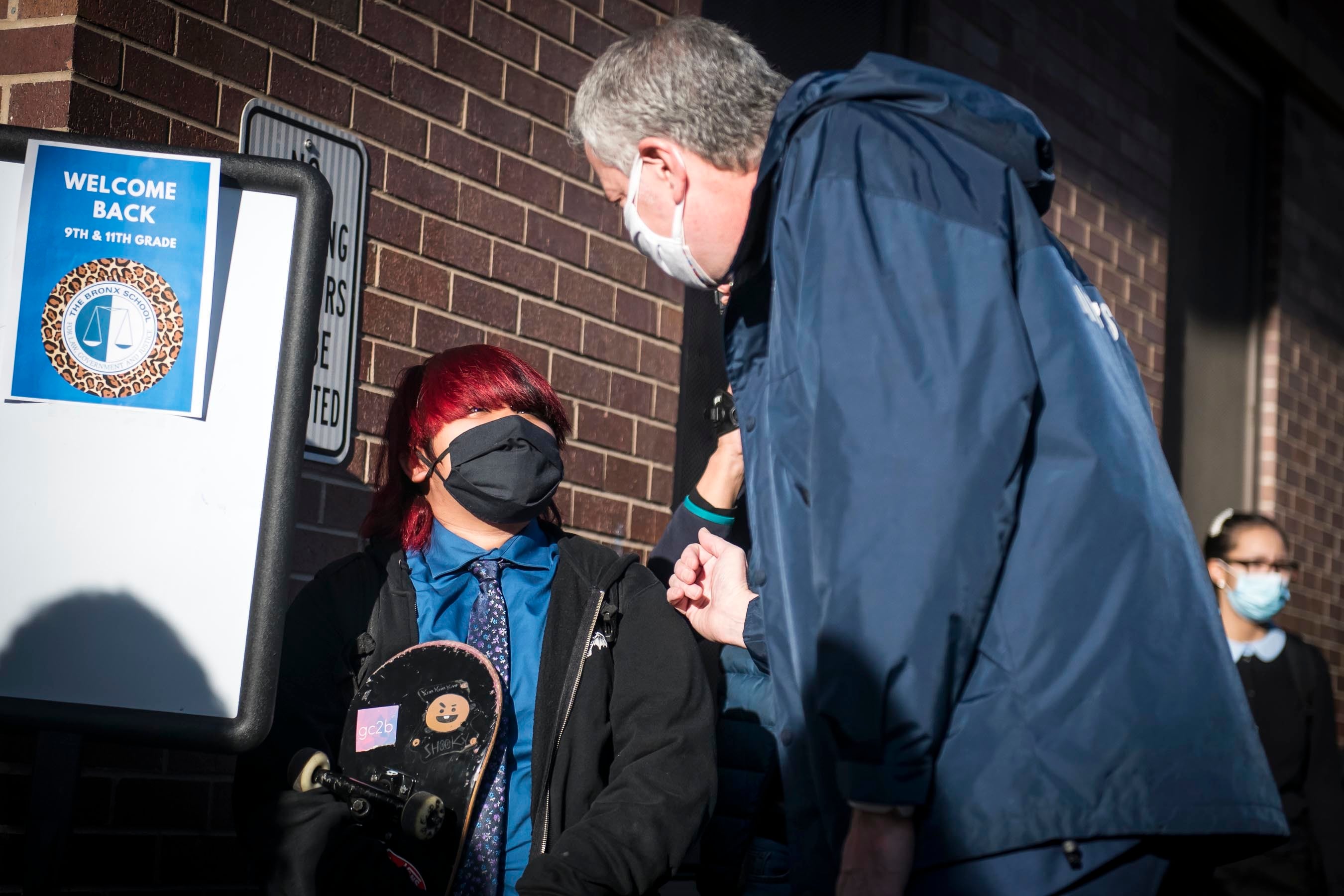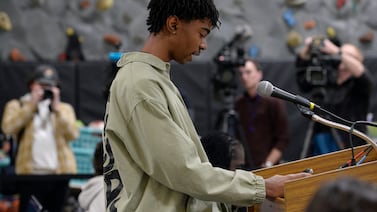Mayor Bill de Blasio’s decision to ditch remote learning for next year solves a big piece of the back-to-school puzzle, but he has yet to provide other key details, including what his $500 million “academic recovery plan” might look like.
The mayor and other education department officials, however, have dropped hints in recent weeks.
Online learning might still play a role — after school. Schools will use assessments in the fall to determine which students might need “high-dosage” tutoring. In thinking about what kind of material will be most engaging to children, the city says it will focus on a curriculum that is more reflective of its students in a system where nearly 85% are children of color.
Even though this effort is focusing on the city’s nearly 1 million students, Linda Chen, the chief academic officer for city schools, recently said she wants to prioritize students who struggled before the pandemic.
“We have students who pre-pandemic we were striving to support,” Chen said last week at a City Council hearing. “In terms of our equity work and action, we want to make sure we double down and support those who didn’t receive what they needed before and especially with the pandemic, now all of those disparities have been absolutely exacerbated.”
She also emphasized that while the education department was making a roadmap, many decisions will be made by principals and their communities.
But many questions remain. Department officials said they did not have more specifics to share on Tuesday, including how the spending would break down, how they planned to prioritize hard-hit communities or which assessments they will use.
The funding for the academic recovery plan is part of the mayor’s proposed budget, which the City Council must approve by July 1, the start of the next fiscal year.
Remote learning beyond the school day
The mayor previously hinted that the city would lean on online individualized learning outside of school hours to address learning gaps from the disruption of the COVID-19 pandemic. He reiterated this week that he plans for students to make use of the half million devices the city acquired for remote learning.
“One of the ways we close that COVID achievement gap is by using digital education after-school hours to expand on the opportunity for each child in a very individualized manner,” de Blasio said this week on NY1’s Inside City Hall.
“Have the kids who got them in that huge distribution...,” he added, “that they continue to work with those devices and further [their] education beyond the normal school day.”
Personalized learning is no panacea, many watchdogs have pointed out, and some programs have fallen short of their promises.
It remains to be seen how teachers will integrate these tools or how they will be responsible for figuring out what programs students might need and how these programs will mesh with other homework they assign. It could pose additional struggles. Last summer when the city created a remote program for the students who struggled most with remote learning, it didn’t go well. Nearly a quarter never even logged on. One in five high school students entered this fall needing to make up coursework from last year while also balancing new work from the current year.
Assessing kids at the start of the year
The city wants to ensure that schools have “vetted” baseline screeners and other low-stakes diagnostic tools so schools can determine early on where students might be struggling or lagging in terms of English and math proficiency. There will also be assessments and interventions tailored to the needs of English language learners and students with disabilities, Chen said.
She compared the screener to a temperature check, giving “high-level” information about whether students are on grade level or meeting subject-area standards. Then schools can use diagnostic tests “to go a little bit deeper,” she explained.
“If students are having a hard time reading, we may not know why they can’t read at grade level. Is it a decoding issue around phonics or phonemic awareness or fluency, or is it a sort of meaning based situation around comprehension and vocabulary?” she said.
Chen said the tools would help teachers “be more precise” when deciding what extra support students need.
Neither Chen nor department spokespeople had specifics on what brands or testing companies they were considering.
The focus on — and presumably high price tag for — assessments “horrified” United Federation of Teachers President Michael Mulgrew, who told the City Council on Tuesday that the teachers union has a different proposal.
The union envisions creating “intervention teams,” consisting of a social worker, counselor, academic specialist and psychologist, which would be assigned to about 250 to 300 students. The team would conduct a one-on-one analysis of each student. Such a process is similar to the “Response to Intervention” program that most schools use when a child might have academic or social challenges that cannot be supported solely by the classroom teacher. The child is referred to a school team and then receives help from an academic intervention teacher or a small group.
High-dosage tutoring
District officials believe assessments would help schools target students who need the most extra support.
The goal, Chen said, is to have a “comprehensive look into high-dosage tutoring that complements and supplements the work that teachers are doing” in their core instruction for all students.
“High-dosage” tutoring is when students have multiple 30- to 60-minute sessions each week. Many school districts are looking into the approach, which research has found to be effective in boosting achievement. For such tutoring to work well, there should be no more than four students in a group, and lessons should reinforce what’s taught in class, according to a guide created by Carly Robinson, a researcher at Brown University’s Annenberg Institute.
High-dosage tutoring was 15 to 20 times more effective than less frequent tutoring, according to one analysis.
Culturally responsive teaching
The education department is also focusing on the curriculum itself, though it does not mandate that schools use something uniform.
Schools Chancellor Meisha Porter has emphasized the importance of students seeing themselves in what’s being taught, and Chen told City Council members that this approach can help bolster learning.
“Their ability to be confirmed for who they are helps them learn and accelerate those skills in ELA and math, specifically,” Chen said.
Some studies have found that culturally relevant teaching and targeted support for students of color yield promising results in terms of reducing dropout rates or boosting attendance and grades.
City officials did not share more details on how they would support schools’ use of culturally responsive curriculum.
Alex Zimmerman contributed.





